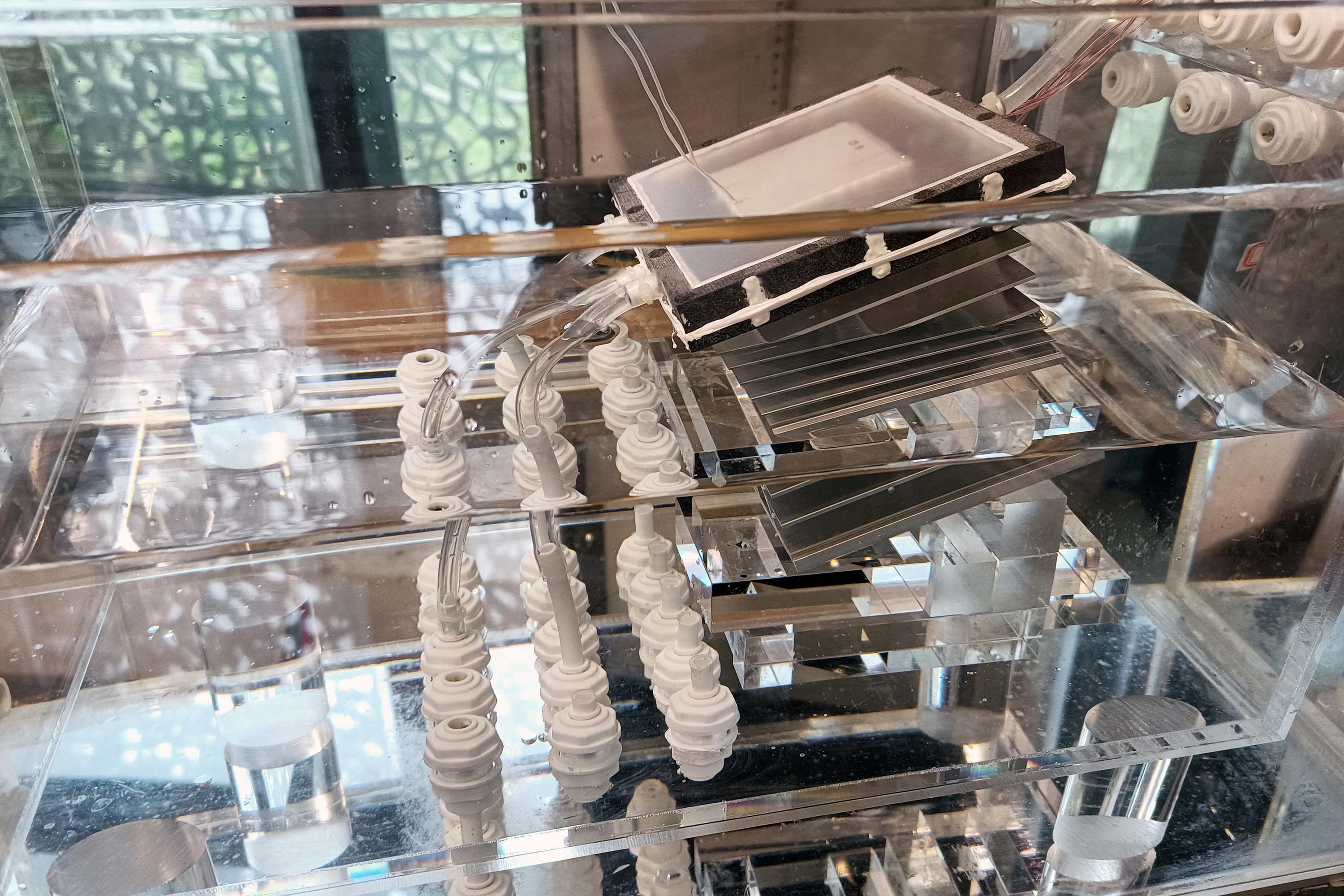The configuration of the device allows water to circulate in swirling eddies, in a manner similar to the much larger “thermohaline” circulation of the ocean. This circulation, combined with the sun’s heat, drives water to evaporate, leaving salt behind. The resulting water vapor can then be condensed and collected as pure, drinkable water. In the meantime, the leftover salt continues to circulate through and out of the device, rather than accumulating and clogging the system.
The new system has a higher water-production rate and a higher salt-rejection rate than all other passive solar desalination concepts currently being tested.
The researchers estimate that if the system is scaled up to the size of a small suitcase, it could produce about 4 to 6 liters of drinking water per hour and last several years before requiring replacement parts. At this scale and performance, the system could produce drinking water at a rate and price that is cheaper than tap water.



It’s really awkward to see multiple reactions critical of the article, yet zero downvotes (well only mind now). Why?
Because this instance doesn’t use downvotes. The default interface doesn’t show downvoting, and attempts to downvote through another interface are literally discarded by the server.
Aha, well that clarifies things.
I do think this article and comment chain show some reason why voting could be seen as a useable redaction method.